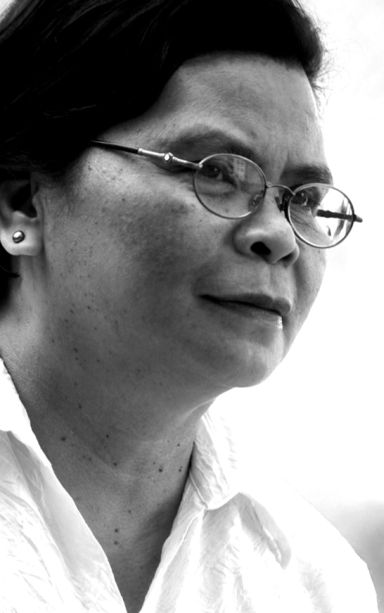
DELA CERNA
Having been exposed to the ICM sisters from kindergarten to being a teacher, the words formation and formation house became familiar whenever former teachers and schoolmates in St. Catherine’s School entered the congregation. We used to visit them in Baguio every time we were there for a conference.
I fully understood the words formation and formation house when in 2014 I was asked to teach or conduct one-hour English sessions twice a week to third year and fourth year seminarians at the St. Alphonsus Collegiate Formation House. With only four to five students per class, one gets to know more about what it is to undergo formation from the perspective and experience of the seminarians.
Towards the end of each semester, teachers are asked to evaluate the seminarians. The evaluation covers not only the class as a whole but most specially of each individual student. The evaluation does not only include their communication skill but also their attitudes and aptitudes, leadership, sense of responsibility, quality of work, how they relate with others. The evaluation also helps in the semestral evaluation of the seminarians by the formators.
Every school yearend, a Thanksgiving Mass is held to culminate the formation year with the parents and family of the graduating students, teachers, counselors, staff and the rest of the community present. At the Thanksgiving Mass last March 24, 2017, Fr. Glenn Tito Pascual, CSsR, the director of SACFH, quoted Pope Francis when he met the various superiors of the religious congregations that “Formation is an Art. It is wholistic – integrating the spiritual, the intellectual, the community, and the apostolic. It is integrated not compartmentalized; it is not a police system or they will become little monsters.”
No regimentation. At first glance, one would observe some kind of leniency or laxity but the idea of not turning them into little monsters prevails. This must be difficult for the formators. But with the present generation of students, being firm but fair would still be very effective.
* * *
Speaking of formation, it always starts at home. One example is gender sensitivity which should start at home and it is only reinforced in school, by the church, and the community. In school year 1986-87, I was the homeroom adviser of one section of fourth year in UP Cebu High School. During one of the conferences with parents, one parent told me that her son and his classmates who were undergoing training to become officers of CAT-I resigned en masse because they did not like the way the girls were treated. This was settled when the instructor was informed and the training officers were given a stern warning. At that time gender issues were not yet considered an issue. If only we have more of this in our homes, perhaps we don’t have to deal with sexual harassment.
In another instance way back in 2004 in my Science, Technology, Society (STS) class composed of Fine Arts students, an NGO head who was a friend of mine, requested my students to tutor the children scavengers in their area how to paint because they were given a supply of paint to beautify the house where these scavengers would meet every Saturday afternoon. The first session was on drawing lines before painting. A male Fine Arts student sadly informed me in one of the sessions that one girl was an abused child. When I asked him how could he tell, he said that when he guided her hand on how to draw, her hand turned cold. Seeing that, he refrained from touching the hand of the girl.
These two incidents are enough to teach everyone that there should be no seminars and workshops on gender sensitivity, sexual harassment. It all starts in the home.